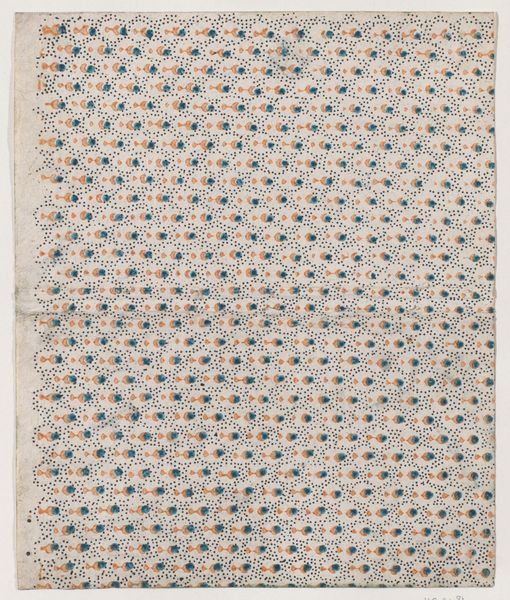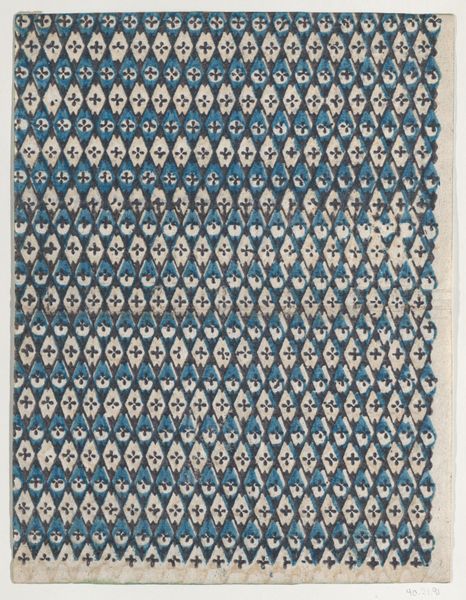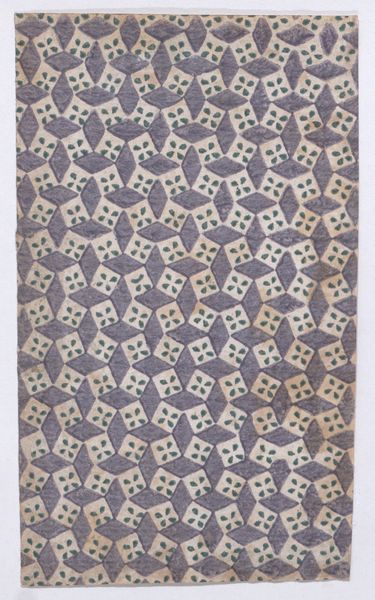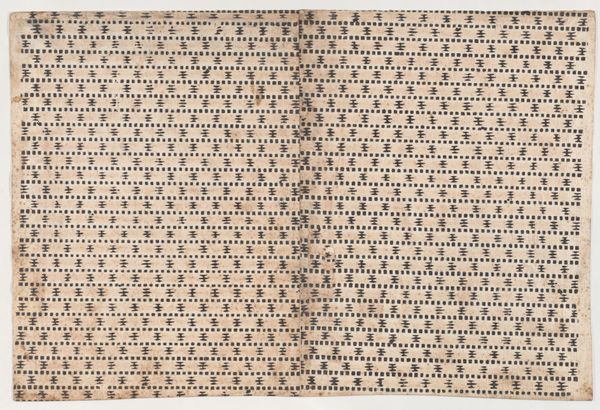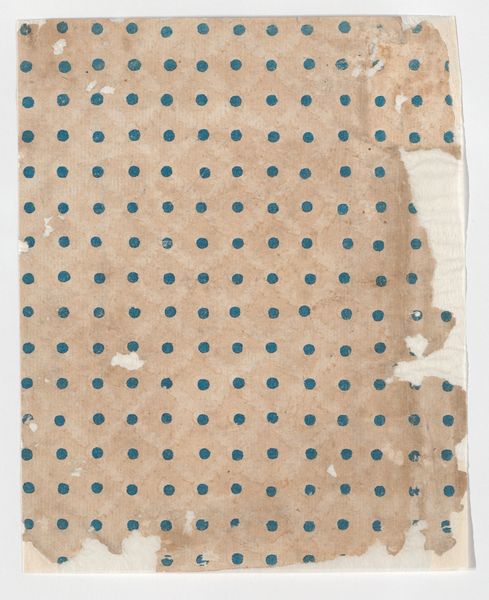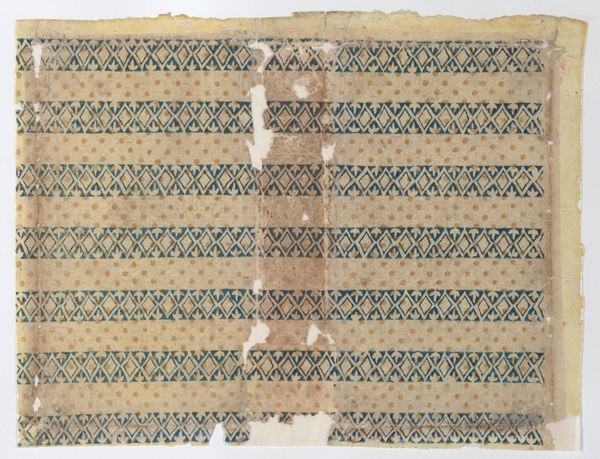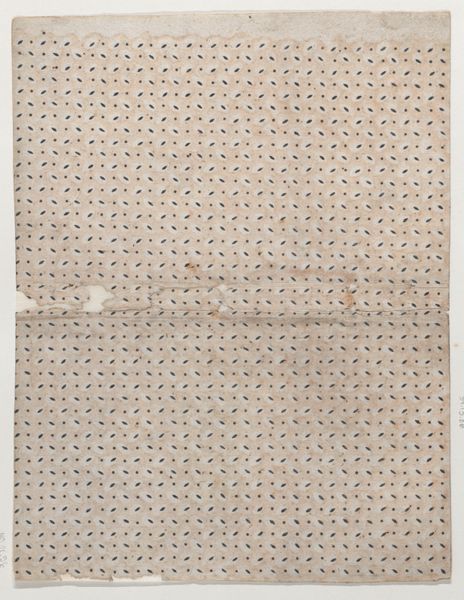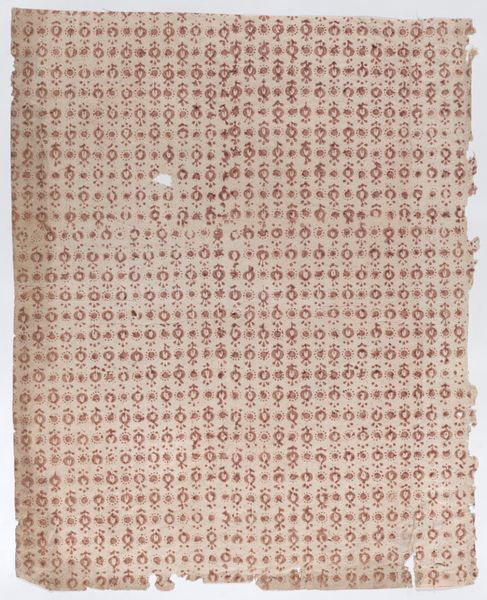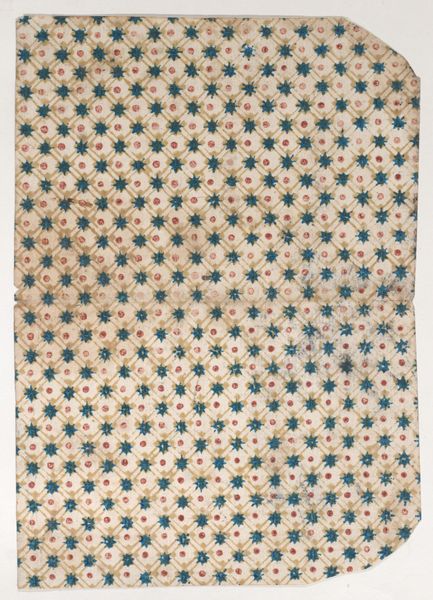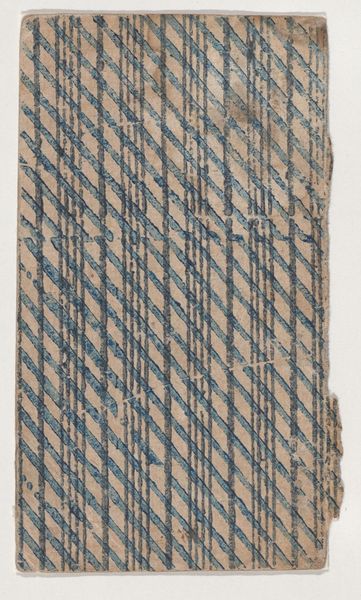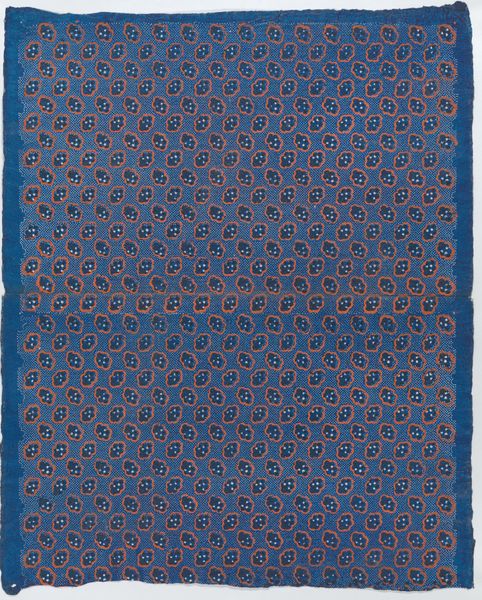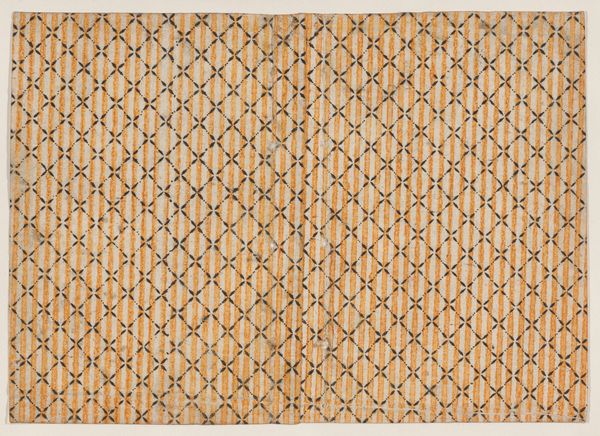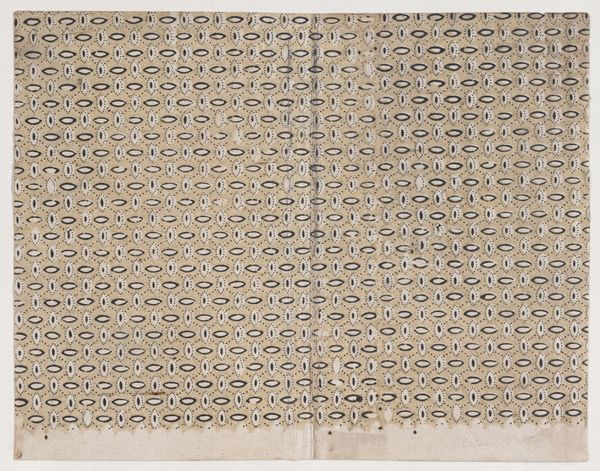
Book cover with overall blue dot and floral pattern 1700 - 1800
0:00
0:00
Dimensions: Sheet: 14 7/16 × 17 15/16 in. (36.6 × 45.5 cm)
Copyright: Public Domain
Editor: This is an intriguing book cover, made sometime in the 1700s by an anonymous artist. It’s a print, perhaps meant to resemble textile. The blue and floral pattern gives me a feeling of serene regularity. What elements of composition do you find most compelling here? Curator: The visual interest lies primarily in the orchestration of the pattern itself. Observe how the horizontal lines provide a grounding structure, a grid if you will, against which the floral motifs are deployed. Notice the restricted palette; the chromatic interaction between the blue ground and the warmer tones of the floral elements is critical. Editor: Yes, I see that now! It almost vibrates visually. What’s the effect of that repetition? Curator: The repetition reinforces a sense of order but is cleverly subverted by slight variations within each floral unit. This prevents the pattern from becoming monotonous and encourages a closer, more sustained viewing. One must ask what it signifies for design. Editor: Signifies? As in meaning? Is there a symbolic structure to this textile pattern? Curator: While the symbolism might be debated, its function as visual structure within the design is undeniable. We are encouraged to observe this function in terms of structure. Do you find a layering? Editor: Well, now that you point it out, yes! The layered effect is so interesting because it creates depth without relying on traditional perspective. It's quite flat but not at all boring. Curator: Precisely. The absence of depth cues forces our eye to engage with the surface and appreciate the intricate dance of line and color. The drawing itself then becomes a subject in focus, distinct from the intention of its creation. Editor: That's such a shift in perspective for me. I was initially drawn in by the cover as a whole. But the beauty really lies in the way each formal element relates to the others, creating its distinct impact. Curator: Indeed. That interplay of the drawing and forms helps constitute a design. Close looking allows these relations to come forth, shifting it all into a more comprehensive impression of an aesthetic design, with parts reliant on each other for greater cohesion.
Comments
No comments
Be the first to comment and join the conversation on the ultimate creative platform.
